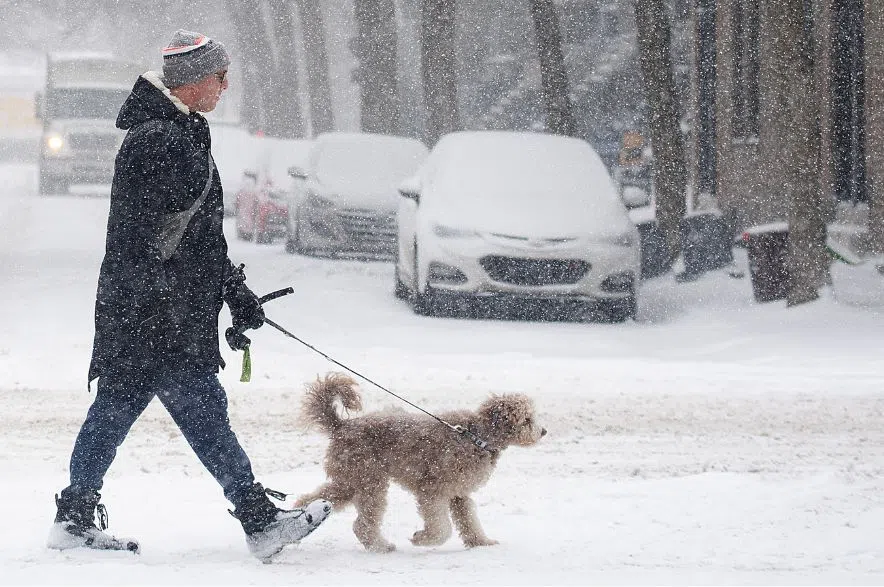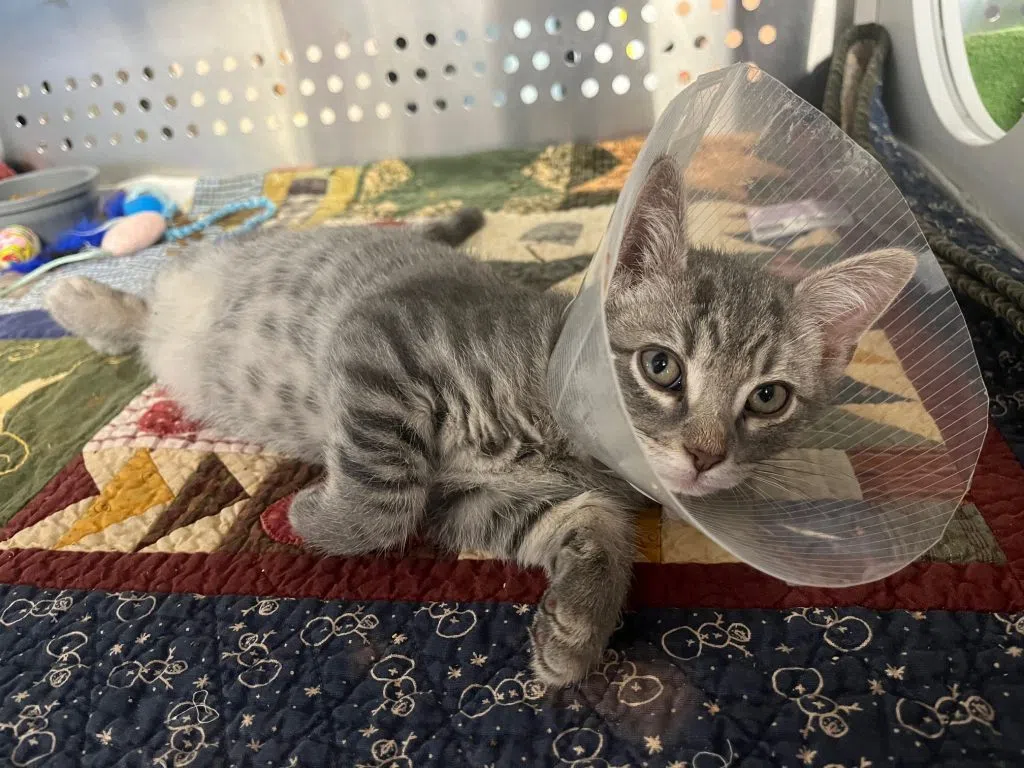Saskatchewan winters have many people staying cozied up inside, but it’s important to remember our four-legged friends also need a break from the cold.
Jemma Omidian, manager of animal care and community engagement at the Saskatoon SPCA, said it’s important to know your pets’ comfort levels while being outside.
“Every dog is different, just like every person is different,” she said.
If you notice your pet lifting their feet, shivering, or curled up in a corner, it’s time to bring them inside.
In extreme temperatures, Omidian advises dog owners to limit time outside as much as possible and spend around five minutes for a bathroom break.
Limited time outdoors means that pets will be cooped up at home, but Omidian said there are ways to entertain them and help them burn off energy.
One-on-one training and introducing new tricks are some of those methods.
“If your dog doesn’t know roll-over, maybe that’s something you could teach them this week,” Omidan said.
Puzzle feeders and lick mats are also effective ways to stimulate your pet’s brain.
Most cats have a lower tolerance to the cold because of their small size, so it’s best to keep them inside during cold temperatures.
As for the stray cats outside, Omidian said it’s important to make noise and bang the hood of your vehicle before starting it.
“Cats will get into the hood, they’ll be looking for a warm space to curl up,” she said, adding that accidents with cats getting into the engine happen more when temperatures drop.
Omidian also advises pet owners to keep an eye out when temperatures warm up to wipe the salt off of pets’ feet and stomachs.
“Salt will burn their skin, so when you’re out for a walk, try to avoid the salty areas,” she said, noting that owners should also be wary of antifreeze as it is poisonous.
“It does taste sweet, so dogs will be attracted to it,” she said.
Earlier this month, the SPCA moved locations to the airport industrial area and will be taking in more surrendered pets than before.












